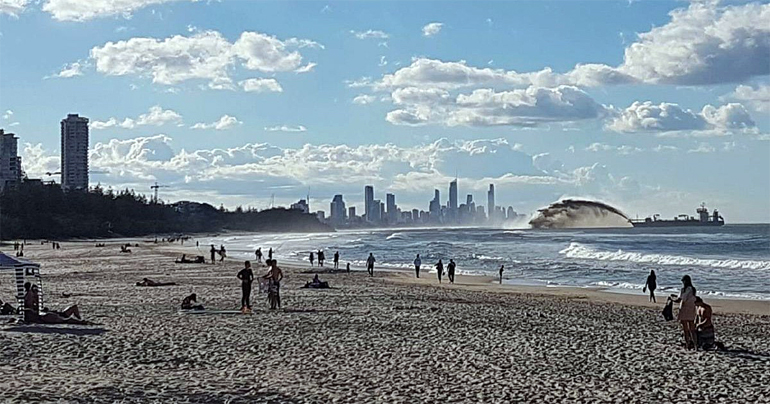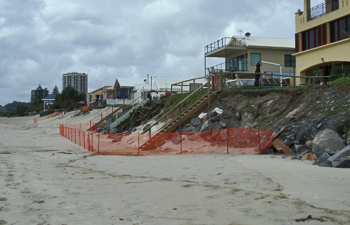Royal HaskoningDHV engages in holistic Golden Beach nourishment, Australia
 Dutch engineering firm Royal HaskoningDHV has been engaged in the design of beach nourishment works at the iconic Palm Beach, City of Gold Coast, Australia.
Dutch engineering firm Royal HaskoningDHV has been engaged in the design of beach nourishment works at the iconic Palm Beach, City of Gold Coast, Australia.
This project is part of the city’s largest offshore dredging and beach nourishment project that includes the construction of an artificial reef.
 Erosion at Palm Beach, City of Gold Coast, Australia
Erosion at Palm Beach, City of Gold Coast, Australia
Significant beach erosion
Palm Beach is at high risk of significant beach erosion compared to other Gold Coast beaches.
Royal HaskoningDHV’s involvement in the nourishment project is part of a holistic plan to provide a sustainable solution for the ongoing protection of the beach and beach infrastructure.
The project also includes the design of an artificial reef, which serves both as a means of coastal protection and as a surfing amenity.
Working with nature
Evan Watterson, Metocean Manager of Royal HaskoningDHV Australia, said: ‘Using a ‘Working with Nature’ approach, our beach nourishment design included innovative pattern placements to mimic natural rhythmic sand bar formations.’
Watterson: ‘We developed the approach as a result of detailed investigations into the long-term morphology at Palm Beach. We adopted this approach to ensure effective sand delivery at the same time as enhancing surfing amenity.’
Much-needed buffer
The Gold Coast Beach Nourishment Project (GCBNP) will increase the volume of sand available along vulnerable sections of coastline, providing a much-needed buffer against future storms and coastal erosion. Together, Palm Beach and the beaches from Miami to Surfers Paradise will receive approximately 3 million cubic meters of sand.
More retention of sand
The natural reef focuses wave energy. The design of the artificial reef will harness this focused wave energy, increasing the volume of sand retained along vulnerable sections of Palm Beach.
The shape and orientation of the artificial reef has been designed to consider wave breaking characteristics on the reef and the surrounding shoreline. This is important for the consideration of surfing and beach use.
The artificial reef will be constructed approximately 330 metres offshore, and will be approximately 144 metres in width.
Due for completion in October 2017, the beach nourishment project is already underway using the 111 meter Balder R hopper dredge owned by Danish dredging company Rhode Nielsen.
This news item was originally published on the website of Royal HaskoningDHV.
Read also on this website
● Innovative parking garage Katwijk wins IPI architectural Award of Excellence, 29 May 2017
● Royal HaskoningDHV selected to design new waterfront for Luanda, Angola, 7 April 2017
● Dutch King Willem-Alexander launches ‘water control room’ in Brisbane, Australia, 4 November 2016
● Country: Australia
More information
Royal Haskoning
Amersfoort, the Netherlands
+31 88 348 20 00
www.royalhaskoningdhv.com
Time-lapse video of Palm Beach shoreline (by UNSW Sydney)



